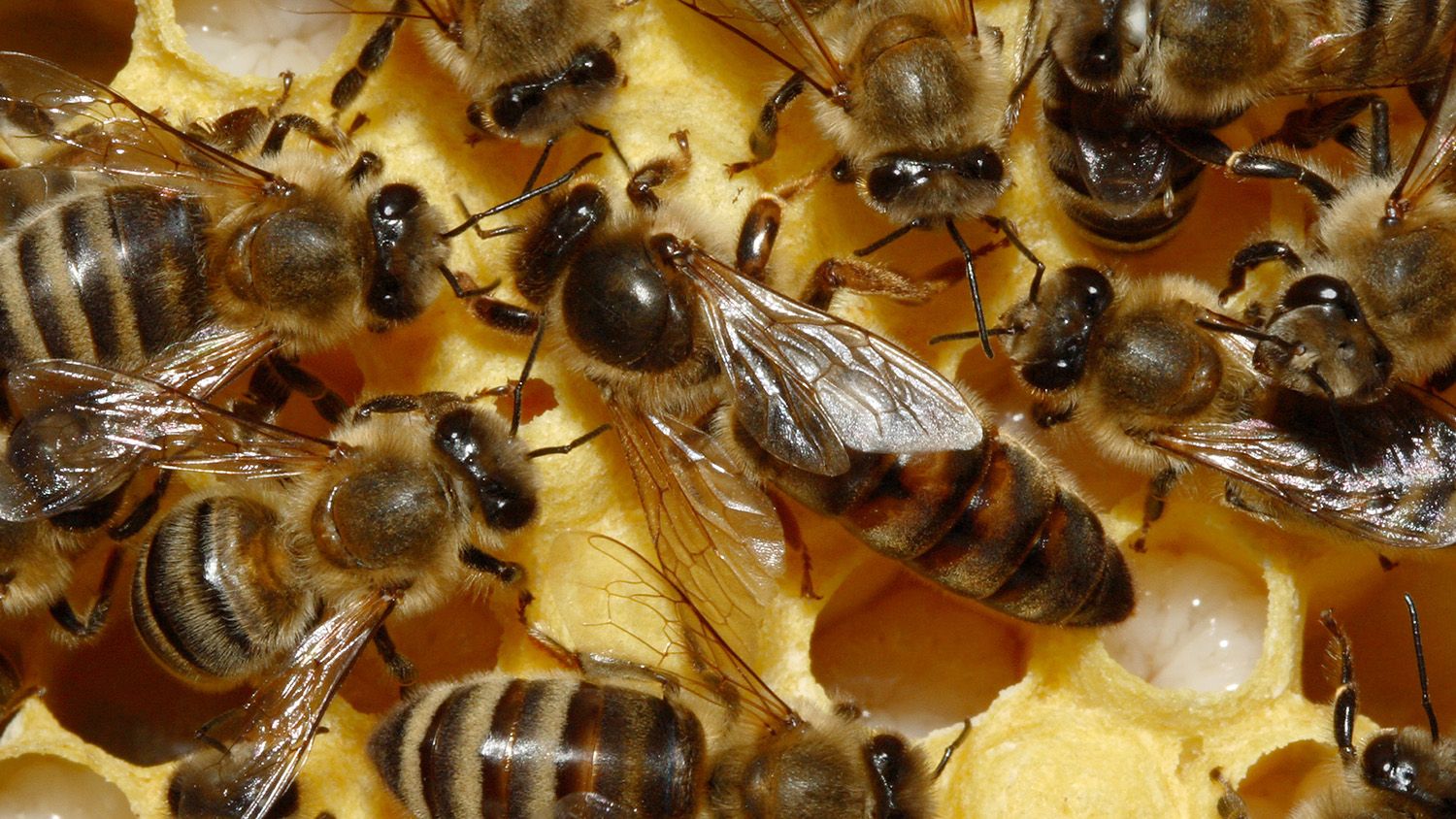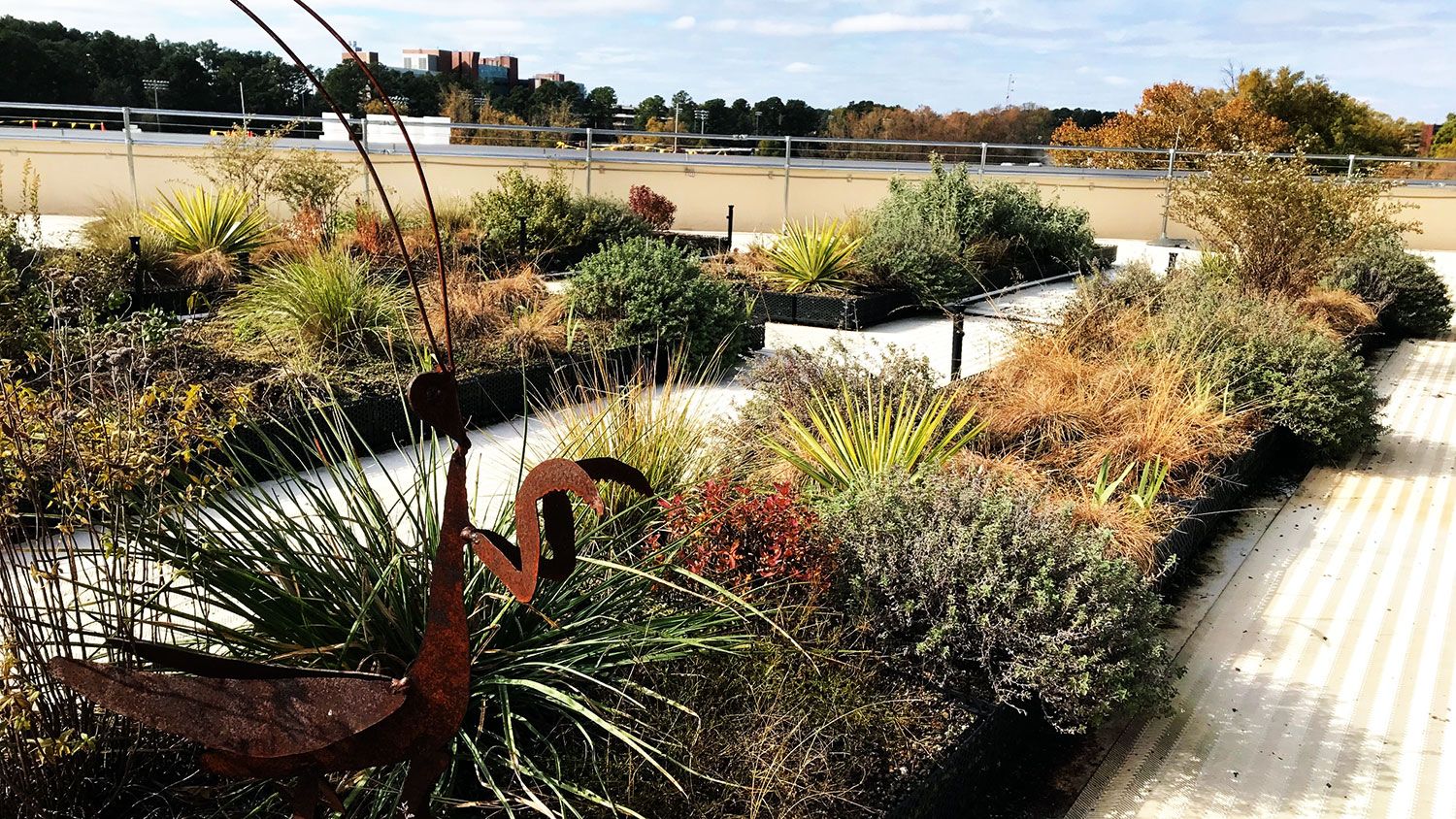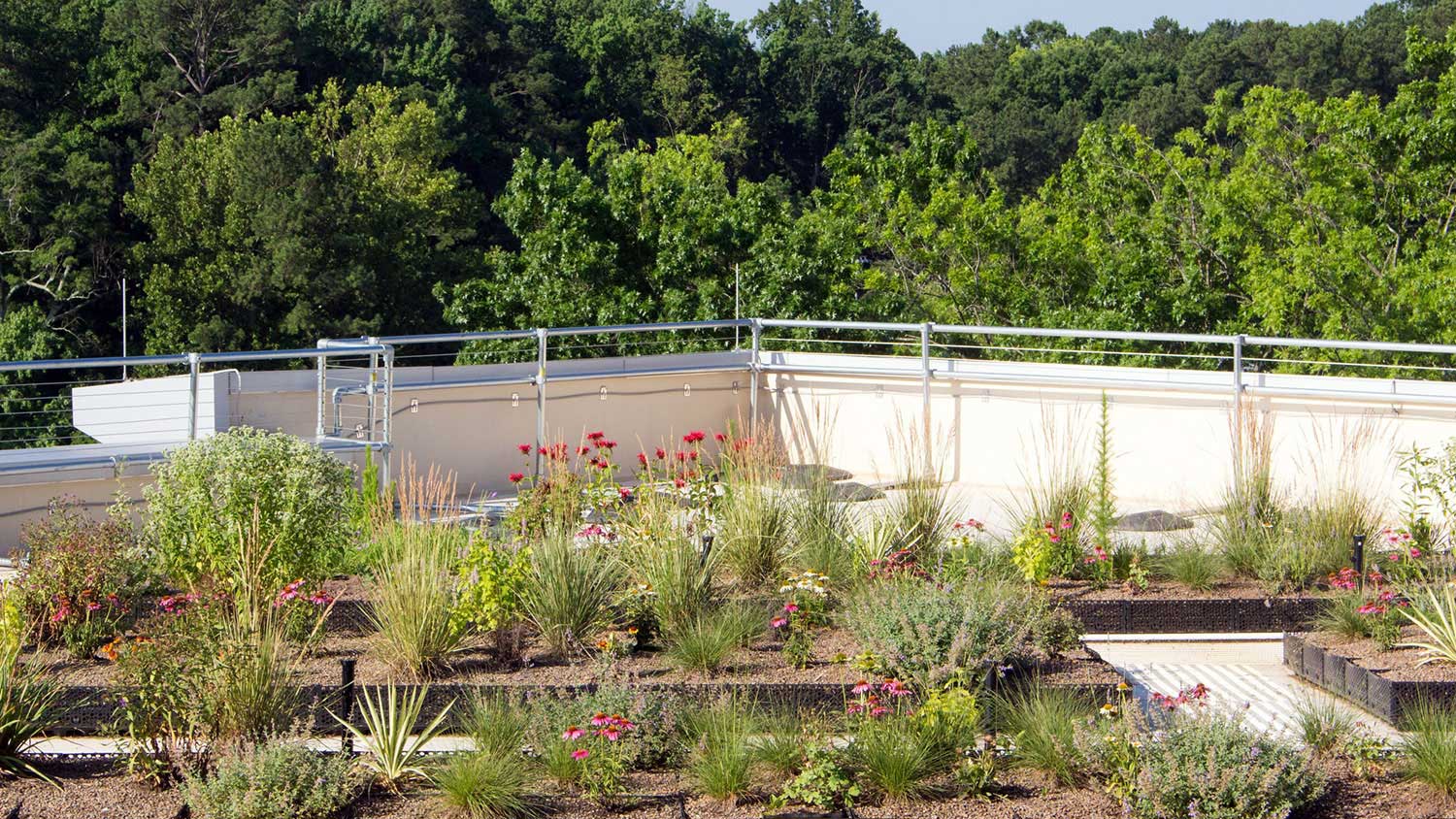
Pollinator Rooftop Living Lab
Situated on the 5th floor of Talley Student Center (south side, outside of the LGBT and Women’s Centers, and also viewable from some of the southern common area windows) is an unexpected site: a unique garden full of vibrant color, textures, forms, and movement. It is not only a sight for sore eyes, but it is a haven for pollinators seeking food and cover. It also helps to reduce the amount of stormwater leaving the rooftop.
Creating high-performing landscapes—landscapes that provide critical ecosystem services in addition to being beautiful—are necessary to mitigate the impacts of urbanization and climate change. If you are a fan of food, you should be concerned about dwindling pollinator habitat, because one in every three bites of food you eat is dependent on pollination. In fact, 75% of the world’s food crops rely on pollination. Every bit of pollinator habitat we create makes a difference.
Students in the Department of Horticultural Science Planting Design course researched appropriate planting palettes for pollinator habitats that would also be suitable for a rooftop environment. They then developed designs and investigated where plants could be sourced as locally as possible. Students in another horticultural science class, Nursery Management, grew some of the plants needed for the roof. You can’t get more local than that!
Students from across campus in a variety of disciplines help to maintain the garden and collect data in terms of pollinators sighted and plant performance. The Pollinator Rooftop Living Lab is an ongoing collaboration between the Department of Horticultural Science and the NC State Student Centers. Initial funding was provided by Park Scholarships Class of 2017, the NC State University Sustainability Fund and the NC State Student Centers.
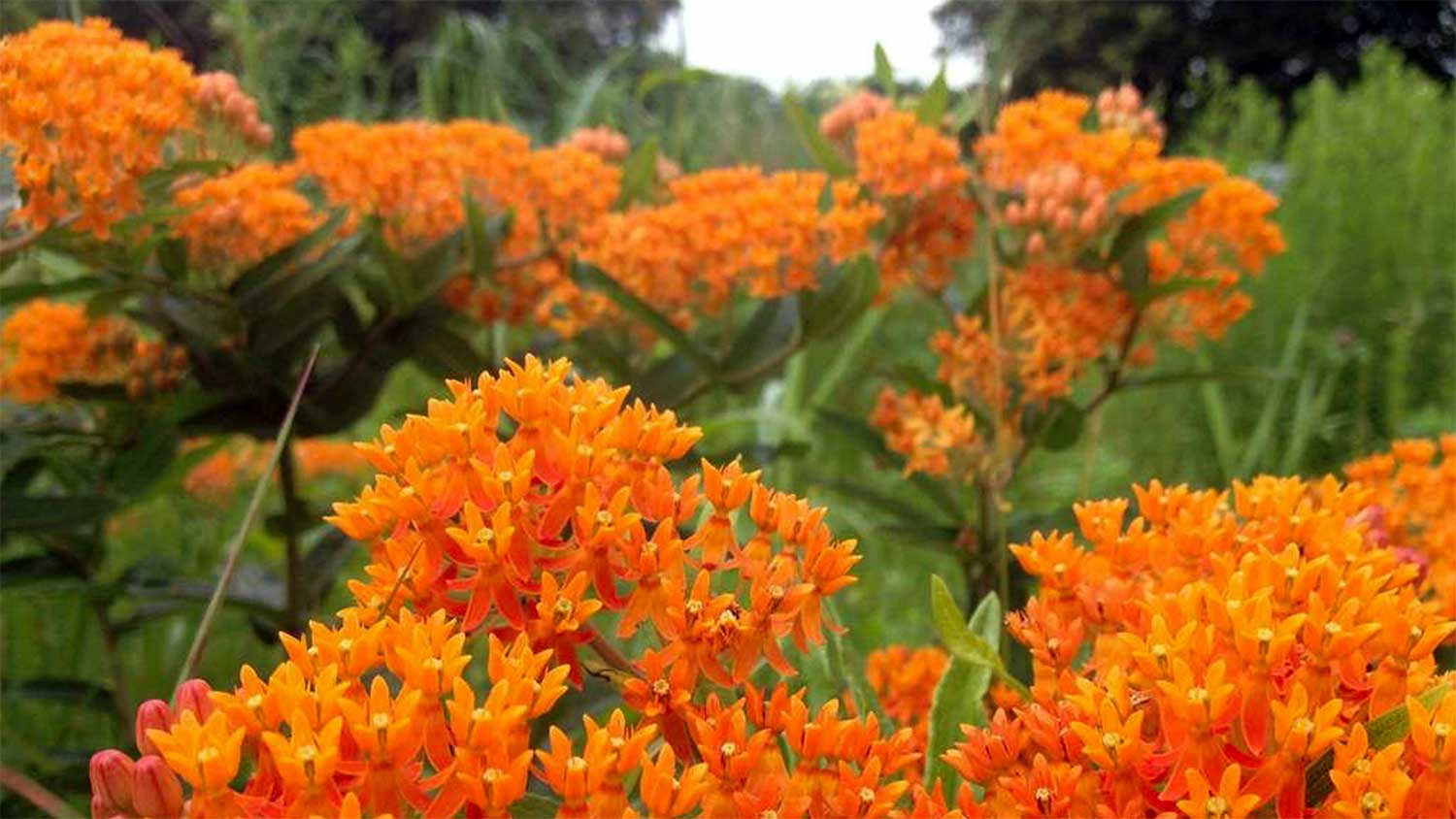
Plants for Pollinators
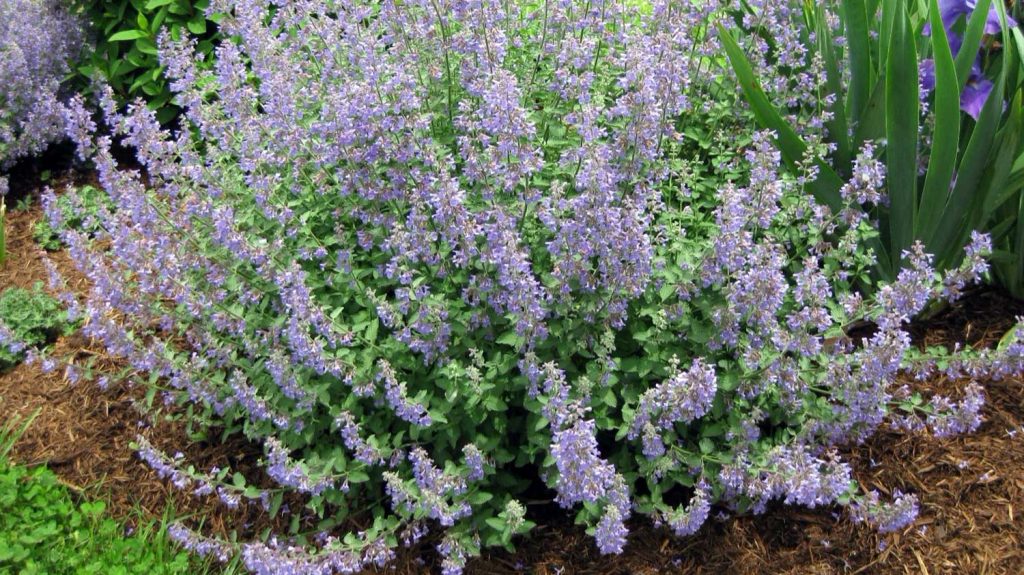
The Pollinator Rooftop Living Lab is planted with a high biodiversity of plants to provide pollen and nectar from March/April through early November (the entire time bees are flying) and habitat for the winter months in the form of hollowed-out ornamental grass stems. High biodiversity of planting is also important in a green roof, where we are striving to reduce the amount of stormwater leaving the roof. Roofs are obviously hot and dry in the summer, which calls for drought-tolerant plants. But here in the southeastern United States, we also receive upwards of 50” of rain throughout the year. So green roof plants also must be able to tolerate wet conditions. Having a variety of plants that both hold onto water (e.g. drought-tolerant succulents like sedums) and plants that transpire readily (e.g. ornamental grasses) and move water out of the soil media are both required for the long term success of the rooftop habitat planting.
We use a combination of native and non-native plants in this garden. When it comes to pollen and nectar, research has shown that bees do not care if a plant is native or not. One of the best-performing plants on the roof has been catmint (Nepeta X faassenii ‘Walker’s Low’), a plant native to Iran. It blooms all summer long, is loved by pollinators, and survived through the irrigation breaking during our first blazingly hot spell in May 2018 and through an entire year of no maintenance nor irrigation during the COVID Pandemic.
But planting for pollen and nectar is only part of the story. When it comes to supporting lifecycles of our native insects and wildlife, native plants are a critical piece of the puzzle. Monarch butterflies, for example, only lay their eggs on butterfly weed (Asclepias spp.), so that is one of the many native plant species on the roof.
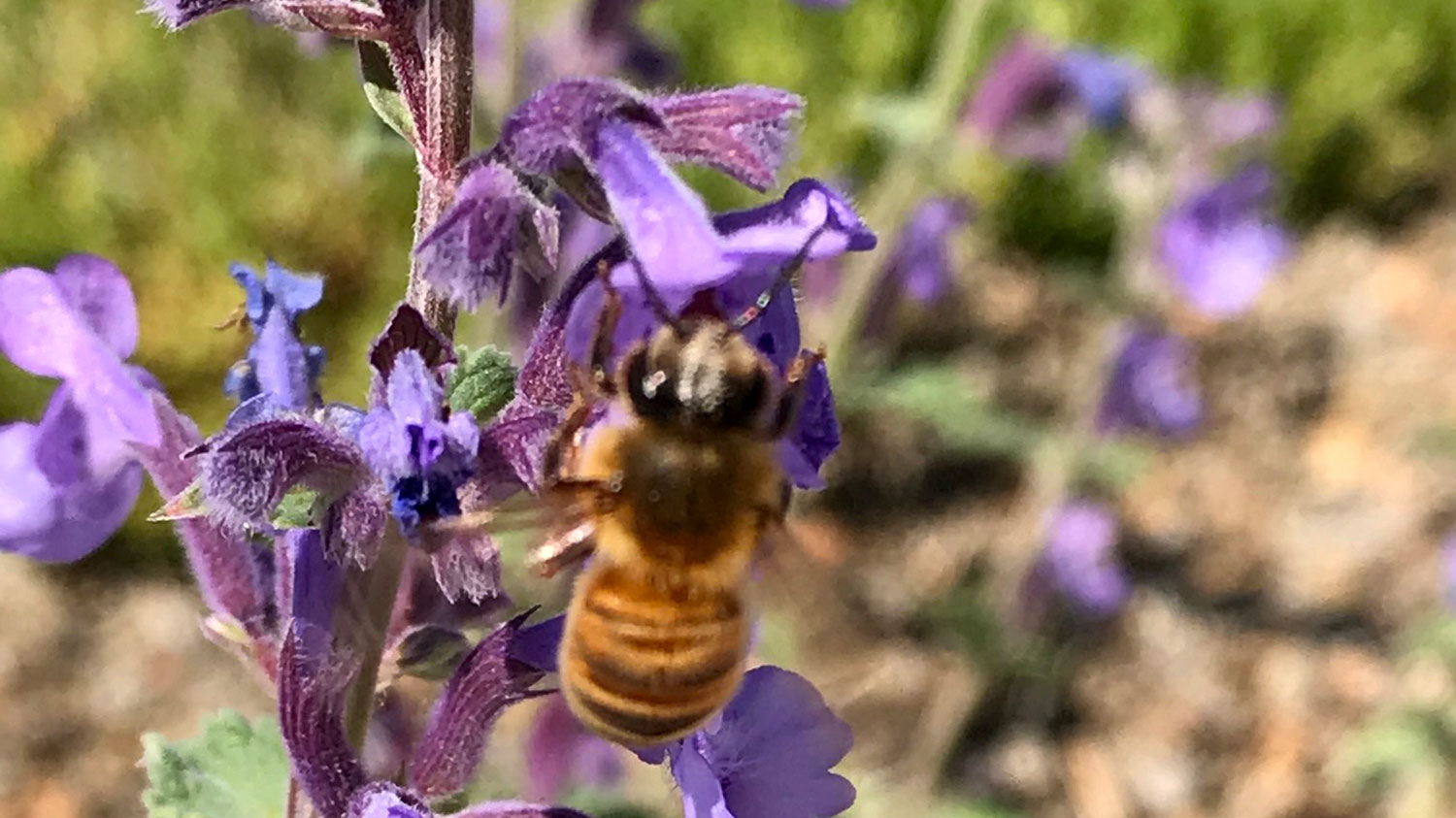
500+ bees are native to North Carolina
While we are all familiar with the honey bee (which hails from Europe), many people are less familiar with our native bees. That bumblebee that just buzzed by? Native! The squash bee and sweat bee? Both native! Other native bee species common to our area include the leafcutter bee, the blueberry bee, the furrow bee, mining bees (including the mason bee), and yes…even the less popular carpenter bee. Native bees are just as effective pollinators as honey bees. They are generally solitary dwellers, meaning they don’t live in hives or have a queen. They tend to live in the soil or in cavities. When it comes to rearing their young, they don’t! They lay eggs in cavities or in the ground, pack the hole with some food and mud and they’re done. Native bees generally don’t sting, as they are not defending their young or a queen.
Pollinator Gardening for the South
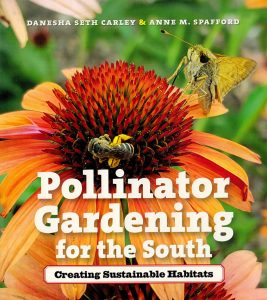
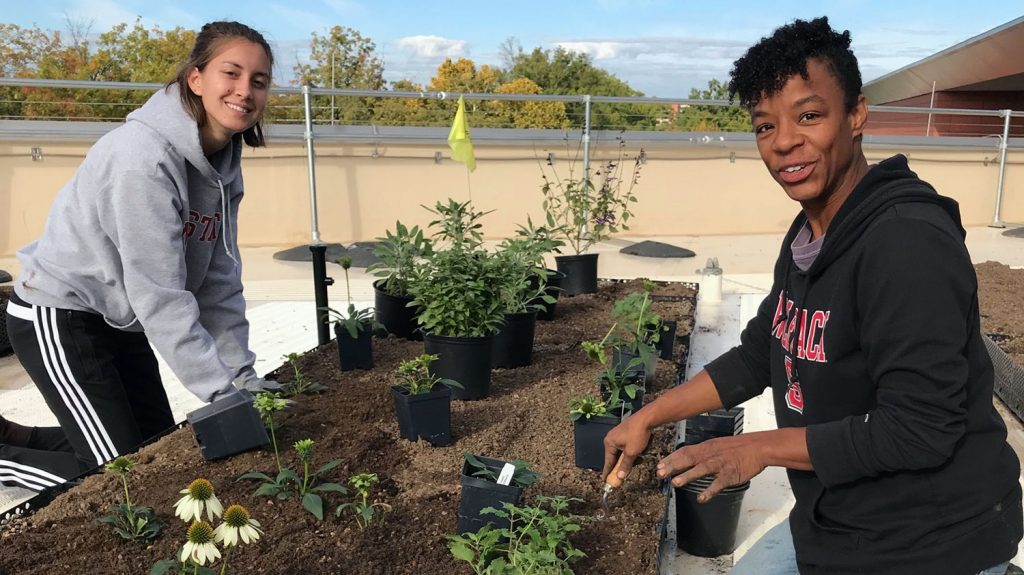
Want to Volunteer?
Many hands are needed to keep the garden looking great throughout the year. Volunteers to help weed, plant additional plants, seed annuals, etc. are always welcome. No experience necessary! Workdays are the third Saturday of every month from 9 a.m. – 12 p.m. Doughnuts are provided. Bring your own water bottle to stay hydrated. Please wear comfortable clothes for a hot roof, including a hat and sunscreen. Please leave all sharp/pointy clothing accoutrement at home in order to protect and preserve the material that covers the roof surface.
Please note that accessing the roof requires navigating two small sets of steps.
Other Opportunities
To learn more, volunteer to help collect pollinator/plant data, or to arrange a tour, contact Anne Spafford at amspaffo@ncsu.edu or stop by her office in the Department of Horticultural Science, 110 Kilgore Hall.
News
Shore, D. New Book: Gardening for Bees, Butterflies and More. NC State CALS News, February 22, 2021.
Davis, C. ‘Bee’ A Pollinator Protector in Your Garden. NC State Sustainability Blog, July 2, 2018.
Davis. C. Photo Tour: Talley Student Union Rooftop Garden. NC State Sustainability Blog. June 28, 2018
Dholoakia, A. New Program Highlights Green Campus Initiatives. Technician Online, June 24, 2018
Seed Your Future website, as part of a landscape designer feature, showcases a video clip of the Talley Greenroof.
